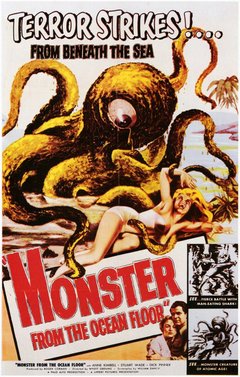The era of sound was not initially kind to the science fiction genre. Two major factors where responsible. The adding of sound to movies redefined the medium. While In many ways it was a step forward, it was a step back in several. Studios brought in stage directors since they were used to handling actors speaking. The down side was that the one cinematography grew a lot simpler as they were used to stage blocking. Another major factor was the Great Depression. The economy collapsed, causing studios to cut back expense special effects laden films. Not to saw that every film in the thirties was cheap, but resources were directed at more guaranteed hits. The 40’s were worst due to the second world war not only keeping resources away, but also put a damper on foreign box-office numbers since most of the world was engaged in you know World War II. It wasn’t until the fifties that the science fiction genre picked up steam, but I’m getting ahead of myself.
Hollywood did produce some science fiction during this period. Just Imagine is a science fiction musical made by Fox. It follows a man from 1930 waking and finding himself in the far far off year of… 1980. The film was a complete flop, attributing to the decline of science fiction films.

huffingtonpost.com
Frankenstein is properly the most well-known science fiction film released at this time. With most images of the monster lifted from this movie. Funnily enough most people don’t tend to think of Frankenstein as science fiction, instead labeling it as Gothic horror. Not to say that it isn’t Gothic horror, especial since the filmmakers decided to make it a period piece setting the film around the same time as the novel was written. But the movie is still about men pushing science. Dr. Frankenstein helped create a horror trope. The mad scientist, who became a favorite villain in horror movies.

crestwestwood.com
Science fiction also lived on in film serials. Back in the early days of films, a feature film would be packaged with a B-movie, a cheaply made film, newsreel, a cartoon, and a film serial. The film serial was one story cut into separate chapters aired week after week. This were cheaply made and tended to be geared toward children. The two most famous of these were Flash Gordon and Buck Rogers, both based on popular comic strips. Many of Flash Gordon’s sets were made for other films, include the above-mentioned Frankenstein and Just Image.

denofgeek.com

wikipedia.org
The serials where popular throughout the thirties and forties but fell into decline and eventually discontinued in the fifties when theater attendance dropped like a brick never to recover. The two slightly connected reasons for this was the invention of television and the rise of suburban neighborhoods. Televisions were the problem that the film industry were most focused on. No longer did people have to go to a theater to watch a show. Now there was a magic box that brought entertainment right into people’s living rooms. But T.V. wasn’t the only thing keeping people away. After World War II many veterans moved into the newly built suburbia. Many of these newly built neighborhoods where built far away from cities and their theaters. And suburbia’s had a bunch of new activities for families to do. Instead of dropping the kids off at the theater all day, you could take them to the park for free. There was tennis, swimming, and a bunch of other things. Hollywood responded to these challenges by spending more money on the movies people weren’t seeing. And focusing on historical dramas. Hollywood in the fifties loved their historical dramas. But happened to science fiction? Still in b-movies, but they b-movies changed a bit.
B-movies began to be shown on their own, going from a run time of roughly an hour to at least 70 minutes. While B-movies had a wide variety genres, science fiction find it’s home here as cheesy movies about mutants and alien invasions. The fear of nuclear war was persuasive throughout this time period. As a result, radiation became a popular tool for writers to use. Kid now has super strength? Radiation! A pack of mutants? Radiation! The B-movie drive in became a stable of this era of pop-culture.

pinterst.com
Not to say the fifties where all schlock. This decade did see some actual attempts to produce quality science fiction. 1951 saw the release The Day the Earth Stood Still. The movie follows an alien named Klaatu who tries to warn the people of Earth the dangers of nuclear weapons. The movie is a look at mankind fears of nuclear war and the possible destruction of the human race. The next major entry was the adaption of the H. G. Wells novel War of the Worlds. It was a big budgeted, winning the Academy award for special effects. It made 2 million at the box office.
Forbidden Planet was another huge production in the science fiction genre. Following a group of astronauts looking for a lost expedition. Basically it was The Tempest in space! The film required 89,000 square feet of sound stage space making it one of the largest productions at the time for MGM.
 cinemablend.com
cinemablend.com
Invasion of the Body Snatchers was released in 1956 and touched upon the political climate at the time. A mysterious alien race is replacing people with copies in a small town. It captured the paranoia that the Cold War was making the American people feel. It was a black and white, low budget film, but the subject matter and the powerful film making made this a classic.
 sky.com
sky.com
http://www.tcm.com/tcmdb/title/1114/Forbidden-Planet/notes.html
Reblogged this on AS NOITES DE MR.JOHN.
LikeLike